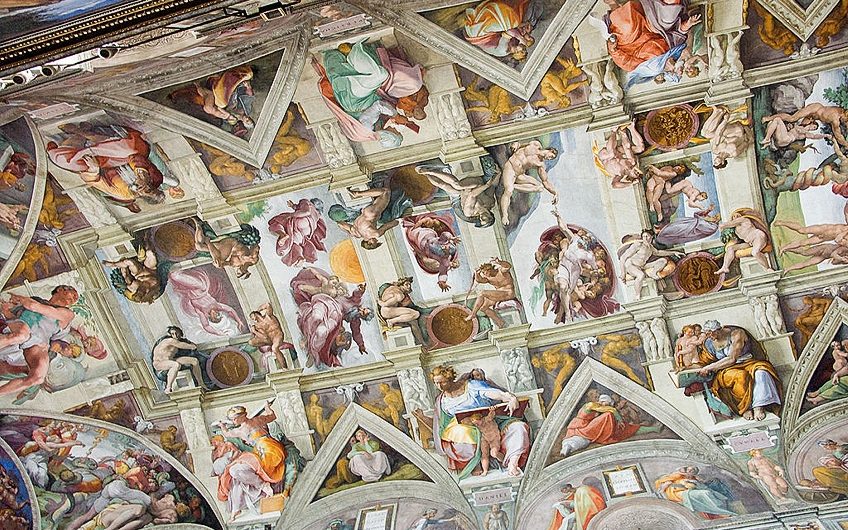When you think of fresco painting, you might imagine grand chapels, towering cathedrals, and centuries-old masterpieces. And while frescoes have certainly left their mark on some of the world’s most iconic religious buildings, the technique itself is so much more than that.
First, let’s talk about the word fresco itself. It comes from the Italian “affresco,” meaning “fresh,” which is fitting given that frescoes are created by painting pigments mixed with water onto wet plaster. This allows the pigments to become a permanent part of the wall, creating a work of art that can last for centuries.

One of the most famous examples of fresco painting is Michelangelo’s ceiling of the Sistine Chapel. Painted between 1508 and 1512, the masterpiece depicts scenes from the book of Genesis and is widely considered one of the greatest artworks of all time. But frescoes weren’t just a Renaissance and Baroque thing – many historical buildings still feature frescoes today, showcasing the technique’s enduring appeal.
But fresco painting isn’t just about preserving the past. It’s also a challenging technique that requires precision and skill. The painter must work quickly, as the plaster can only be painted while it’s still wet. And because frescoes require a good understanding of the properties of plaster and pigments, it’s a technique that only the most skilled and dedicated artists can master.
So next time you’re wandering through a historic building, take a moment to appreciate the frescoes on the walls. These works of art may be old, but the technique used to create them is just as vital today as it was hundreds of years ago.



